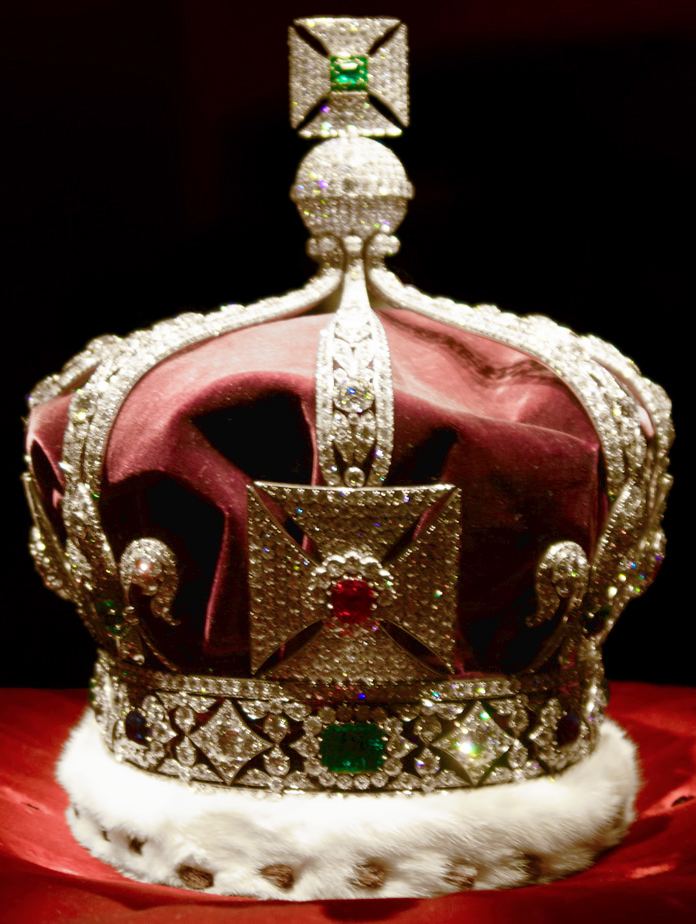 | ||
The Imperial Crown of India is the crown used by King George V in his capacity as Emperor of India at the Delhi Durbar of 1911.
Contents
Origin
The British constitution prohibits the Crown Jewels from leaving the country, a product of the days when kings and queens often pawned the jewels to foreign buyers. There are also considerable risks involved in transporting the historic regalia by sea and land over such a great distance. For these reasons, a new crown was made specially for George V and Queen Mary's trip to India in 1911, where they were proclaimed as Emperor and Empress of India before the princes and rulers of India.
The Crown Jewellers at the time, Garrard & Co, made the crown at a cost of £60,000, which was borne by the India Office.
Description
The Imperial Crown of India weighs 920 g (2 lb) and is set with emeralds, rubies, sapphires and 6,100 diamonds. In the centre of the front cross is a very fine Indian ruby and in the top cross a large fine emerald. The king wrote in his diary that it was heavy and uncomfortable to wear: "Rather tired after wearing my crown for 3½ hours; it hurt my head, as it is pretty heavy".
Similar to other British crowns, it consists of a circlet with four crosses pattée and four fleurs-de-lis. However, the eight half-arches on top, which join at a typical monde and cross pattée, point upwards in the form of a Gothic ogee arch. The crown is the only crown of a British sovereign to have eight half-arches, in the style of continental European crowns, departing from the tradition of British crowns having two arches or four half-arches.
Usage
George and Mary were not crowned as emperor and empress at the ceremony; the Archbishop of Canterbury, Randall Davidson, did not think it appropriate for a Christian service to take place in a country where the people were mostly Hindu or Muslim. Instead, the king simply wore the crown as he entered the durbar, and the durbar was styled as an affirmation of the king's coronation, which had already taken place in the United Kingdom six months earlier.
It has not been used since George V returned from India and is now a part of the Crown Jewels on display in the Jewel House at the Tower of London.
